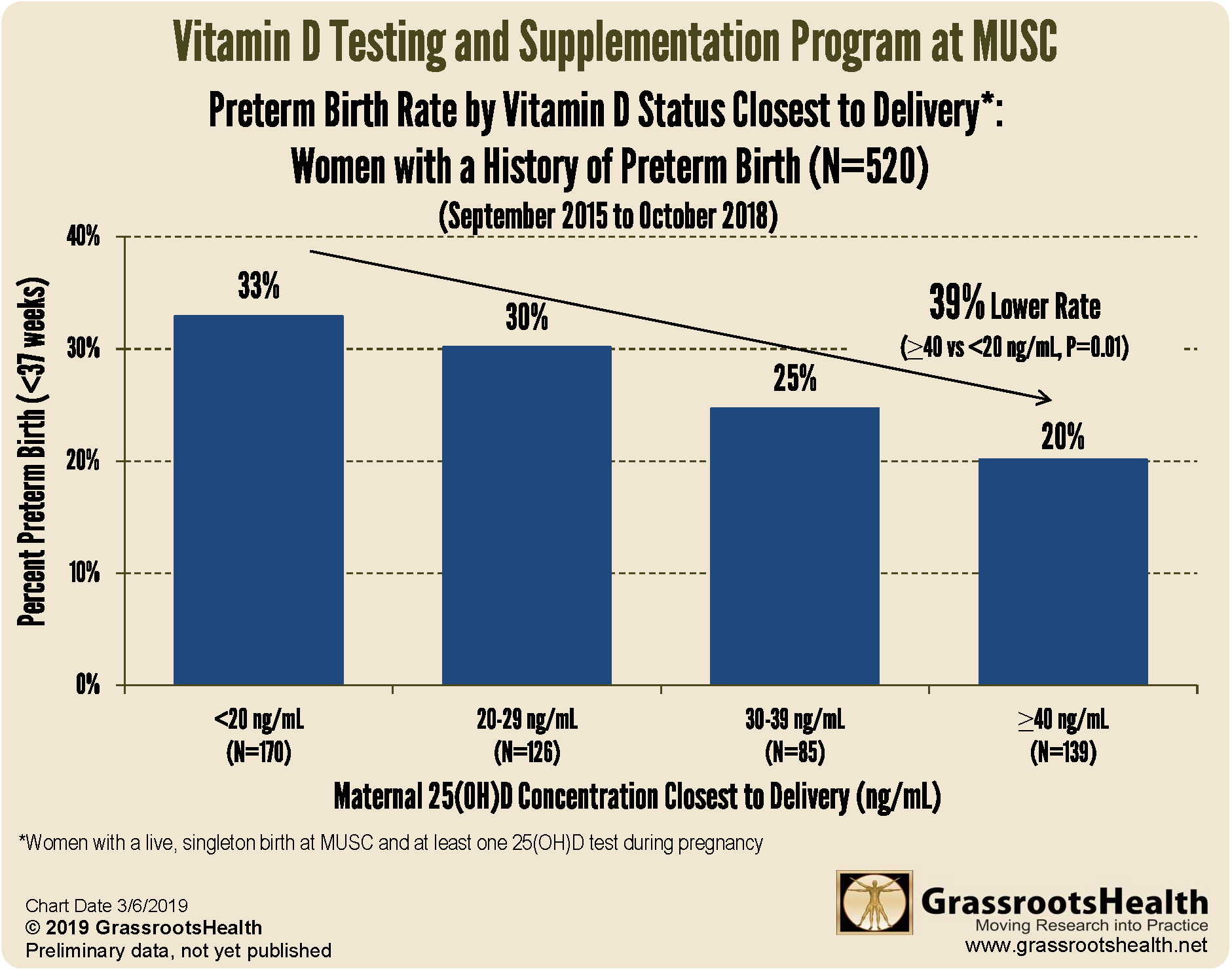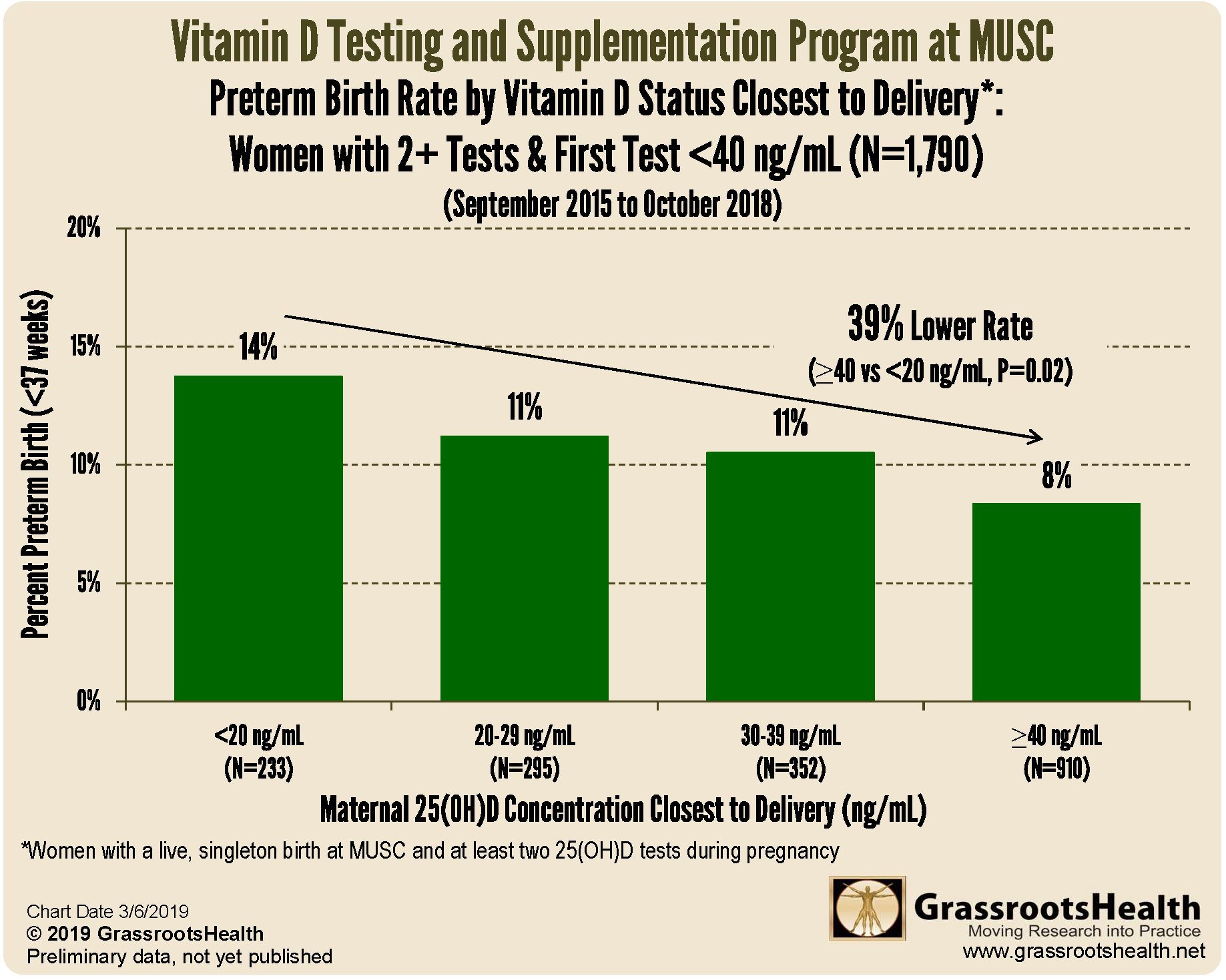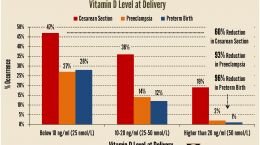Published on March 12, 2019

In September 2015, the Medical University of South Carolina (MUSC) initiated a new standard of care for pregnant women that included routine vitamin D testing and supplementation to reduce preterm birth. Results from year one were published in PLOS One in 2017. In this two-part blog series we are giving a three-year update about this exciting project. In part 1, we looked at the association between vitamin D level and preterm birth among all women. In this blog (part 2), we will take a look at this association among select subgroups of women.
Vitamin D Level and Preterm Birth by Race/Ethnicity
For both white and non-white women, preterm birth rates decreased as vitamin D levels increased. Among white women, those with vitamin D levels at or above 40 ng/ml closest to delivery had a 55% lower rate of preterm birth compared to those with vitamin D levels less than 20 ng/ml (p=0.001). Among non-white women, those with vitamin D levels at or above 40 ng/ml closest to delivery had a 42% lower rate of preterm birth compared to those with vitamin D levels less than 20 ng/ml (p=0.0002).
Vitamin D Level and Preterm Birth for Women with a History of Preterm Birth
Women with a history of preterm birth have a 2 to 3-fold increased risk of a recurrent premature delivery compared to women without a history of preterm birth. We looked at the association between vitamin D and preterm birth among this high risk population and found that those with vitamin D levels at or above 40 ng/ml closest to delivery had a 39% lower rate of preterm birth compared to those with vitamin D levels less than 20 ng/ml (p=0.01).
Vitamin D Level and Preterm Birth for Women with a First Test less than 40 ng/ml
To assess whether raising vitamin D levels to 40 ng/ml made an impact, we compared the preterm birth rates for women with low vitamin D levels (less than 40 ng/ml) on their first test by their achieved levels closest to delivery. We found that those who achieved at least 40 ng/ml had a 39% lower rate of preterm birth compared to those less than 20 ng/ml (p=0.02).
This three-year project update supports the previous clinical trial and field study findings that vitamin D levels at or above 40 ng/ml are associated with lower preterm birth rates. If you know any pregnant women or women who are planning to become pregnant, be sure to encourage them to check their vitamin D levels!
Test your vitamin D levels today!
In addition to preterm birth, there is overwhelming evidence about the association between vitamin D and many diseases including bone diseases (rickets, osteomalacia, and osteoporosis), multiple sclerosis, diabetes, cancer, and many others. Check your vitamin D levels today!
How can I track my vitamin D levels?
To help you track your nutrient levels, GrassrootsHealth has created an online tracking system called myData-myAnswers. For each nutrient you can track your intake and nutrient levels over time. This will help you know how your nutrient status impacts your health. Check it out today!











